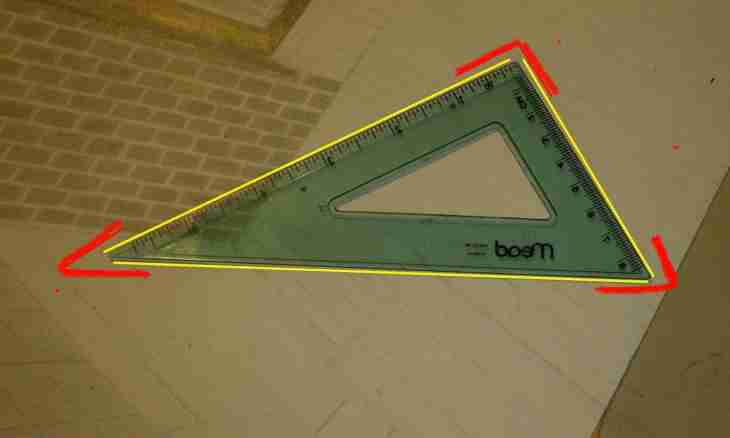The triangle as a flat geometrical figure is made by three parties forming in connection points (tops) three corners. These corners and the parties are connected among themselves by constant ratios that allows to find unknown lengths of the parties in the presence of at least minimum data set about sizes of corners and lengths of other parties. Several ways of determination of length of the party of a triangle in relation to the Euclidean plane are given below.
Instruction
1. If sizes of two corners of a triangle are known (α and β) and also length of one of the parties (C), then lengths of two other parties can be determined, but formulas of calculation will differ, depending on whether both known corners adjoin to the party of the known length. If yes, that, proceeding from the theorem of sine and considering the theorem of the sum of corners in a triangle, length of that party (A) which lies opposite to a corner α, it is possible to define as the relation of the work of a sine of this corner at the known length of the party to a difference sine between the developed corner (180 °) and the sum of two known corners: A=sin(α) ∗ C / (sin (180 °-α-β)). For determination of length of the third party (B) lying opposite to a corner β this formula it is necessary to change as appropriate: B=sin(β) ∗ C / (sin (180 °-α-β)).
2. If the party (B) of the known length does not lie between two known corners (α and β), and adjoins only one of them (for example, to α), then formulas of calculation of lengths of the remained parties will change. The party (C) lying opposite to the unknown of a corner will have length determined by a ratio of the work of the sine of the angle lacking up to the total size of all corners in 180 ° at length of the known party to a sine of the angle lying opposite to it: C=sin (180 °-α-β) ∗ B/sin(β). And length of the third party (A) can be determined by this formula: A=sin(α) ∗ B/sin(β).
3. If lengths of two parties are known (A and B) and the size of one of corners, for finding of length of the missing party it is possible to use the theorem of cosines. If the corner of the known size (γ) lies between the known parties, then length of the required party (C) will be equal to a square root from a difference between the sum of squares of lengths of the known parties and the doubled work of lengths of these parties on a cosine of the known corner: C= √ (And²+B²-2∗А∗B∗cos(γ)).

